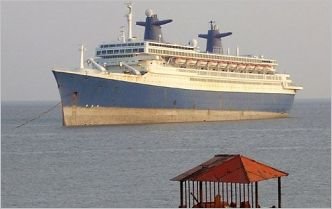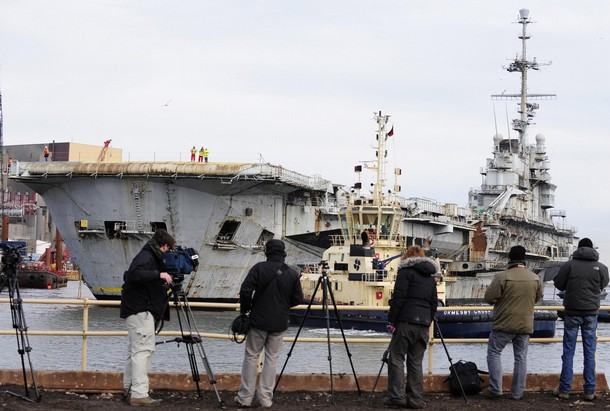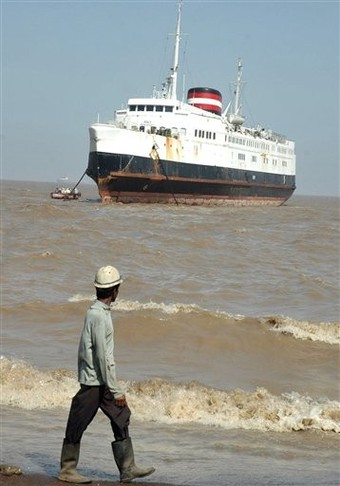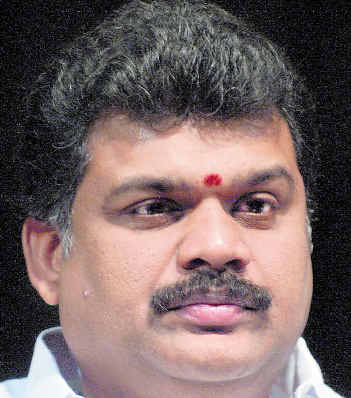Note: Having accompanied the Special Rapporteur on Toxic waste to Alang, ToxicsWatch Alliance (TWA) finds the statement of the Special Rapporteur with regard to "improving health and safety conditions in shipbreaking yards" to be factually incorrect. The assertion that "considerable decrease in the number of work-related injuries resulting in death or permanent or temporary disabilities" at shipbreaking yards is a figment of someone's imagination. Even newspapers reports can reveal the falsehood of this statement. TWA is aware that one IMO official was working overtime to influence the statement and report of Special Rapporteur. Having interacted with Prof. Okechukwu Ibeanu personally, I refuse to believe that he has made this statement. It appears that officials who drafted his report were under some influence. I suspect that someone else has attributed these views without cross-checking it with Prof Ibeanu.
The statement on page 2 of the Special Rapporteurs' report which one finds here also has the resonance of one IMO official:
With specific regard to shipbreaking, the Special Rapporteur notes with satisfaction
the improvement of the health and safety conditions in Alang/Sosiya, as well as the efforts made by the regulatory authority and the industry to improve the health and quality of life of workers and their families.
The Special Rapporteurs' views on hazardous waste management is also evidently incorrect because the National Inventory of Hazardous Wastes Generating Industries & Hazardous Waste Management in India prepared by India's Central Pollution Control Board (CPCB) available on its website reveals the correct picture. India has 36, 165 hazardous waste generating industries, generating 62, 32, 507 Metric Tonnes of hazardous wastes every year in the face of paucity of capacity to deal with it.
Out of the total waste generated within the country, as per CPCB, Land Fillable Hazardous Wastes is 27, 28, 326 MTA (Metric Tonnes/Annum), Incinerable Hazardous Waste is 4, 15, 794 MTA and Recyclable Hazardous Wastes is 30, 88, 387 MTA It is obvious that the recyclable portion of Hazardous Wastes is in the range of 49.55 % and is more than other two categories. The land disposable portion and incinerable portion are in the tune of 43.78 % and 6.67 % respectively.
India has only 22 Common Treatment, Storage and Disposal Facilities (TSDF) for the disposal of hazardous wastes in 10 States only namely Gujarat, Maharashtra, Uttar Pradesh, Andhra Pradesh, Himachal Pradesh, Madhya Pradesh, West Bengal, Punjab, Rajasthan and Tamil Nadu. Total disposal capacity of these facilities, is 15, 00, 568 MTA which is much less than the present generation of 27, 28, 326 MTA of land-disposable hazardous wastes. The deficit of TSDF capacity is 12, 27, 758 MTA. It is obvious that the additional TSDF to the tune of 15, 00, 000 T/A must be developed to accommodate the present and future quantities of land disposable hazardous wastes.
For incinerable hazardous waste as per CPCB, there are 14 Common Incinerators in 7 States and 127 individual incinerators in 12 States. Total incineration capacity of these incinerators is 3, 27, 705 MTA while the present generation of Incinerable hazardous wastes is 4, 15, 794 MTA. It is clear that there is a deficit of 88,089 MTA of incineration capacity of the country. It is proposed by different States to install additional incinerators to provide an additional incineration capacity of 2, 56, 710 MTA. From these figures reported in the “National Inventory of Hazardous Wastes Generating Industries & Hazardous Waste Management in India”, it is quite clear that Special Rapporteur has erred in welcoming "the significant progress the country has made in the area of the management and disposal of hazardous products and wastes" at page of his report.
The inconsistency with regard to his views on ship breaking is quite manifest when he says, "Regulatory authorities in Alang/Sosiya and the shipbreaking industry should
step up their efforts to improve health and safety in the yards" because he also states and observes his major concerns as "the health and safety situation
prevailing at the shipbreaking yards continues to remain critical, as witnessed by the 12 fatal accidents that occurred in Alang/Sosiya during the course of 2009, and there are a number of identifiable shortcomings which need to be addressed" at page 12 of his report. TWA agrees with the latter part of it.
TWA agrees with the report when it states, "Health facilities in Alang/Sosiya do not possess sufficient human, technical and financial resources to provide any treatment other than first aid for minor injuries. The nearest hospital equipped to deal with life-threatening conditions is in Bhavnagar, more than 50 kilometres away. The Red Cross hospital in Alang, which the Special Rapporteur visited, can count on only four medical doctors and nine beds to provide health care not only to some 30,000 workers in the yards, but also to the neighbouring villages of Alang (which has a population of about 18,000 people) and Sosiya (4,000 people)" on page 14.
TWA agrees, "In Mumbai the situation is even worse, with no permanent facilities except first aid and ambulance services."
TWA shares the observation that "most workers, but reportedly also a number of yard owners, are not aware of the serious life-threatening work-related diseases which may result from long-term exposure to toxic and hazardous substances and materials present on end-of-life ships. In particular, it appears that the majority of the
workforce and the local population do not know the adverse consequences of prolonged
exposure to asbestos dusts and fibres and are not familiar with the precautions that need to be taken to handle asbestos-containing materials."
It is true that "The majority of the workforce lives in overcrowded makeshift facilities just outside the yards. Most accommodations lack basic amenities such as kitchens, toilet facilities, electricity and running water. The water and sanitation facilities available in Alang/Sosiya remain grossly inadequate to deal with the consumption, cooking, and personal and domestic hygienic requirements of the 30,000 workers who work and live there. In Mumbai, the situation is even worse, with no safe drinking water available in the yards."
On page 13, he observes, "the vast majority of the workforce in Mumbai do not
receive any information on the hazards or risks to health and safety, nor do they receive any training on how to avoid or minimize them. With regard to safety training, the Special Rapporteur is of the view that existing training opportunities in Alang/Sosiya should be improved, considering the magnitude of the risks associated with shipbreaking activities and the hazardous substances workers are potentially exposed to." He adds, "Due to the informal nature of working arrangements, workers are not covered by social protection schemes, and do not receive any benefit in case of work-related injuries or diseases." TWA agrees with it.
He observes, employers do not pay for long-term medical treatment or for expenses
linked to chronic work-related illnesses. Workers do not usually receive any wages or
benefits when absent from work on medical grounds. TWA agrees with it.
TWA endorses Special Rapporteur's assessment wherein it says "in India ships are
dismantled on beaches, a method commonly referred to as “beaching”.5 This method of
ship dismantling fails to comply with generally accepted norms and standards on
environmental protection. Although very little work has been carried out to assess its
environmental impact, the dismantling of ships on sandy beaches without any containment other than the hull of the ship itself appears to have caused high levels of contamination of soil, air, and marine and freshwater resources in many South Asian countries, and to have adversely affected the livelihood of local communities surrounding the shipbreaking facilities, which often rely on agriculture and fishing for their subsistence" at page 9 of his report.
TWA welcomes Special Rapporteur's recommendation seeking "an independent study be
carried out to assess the actual and potential adverse effects caused by the discharge
of hazardous substances and materials into the natural environment. Such a study
should also assess the steps that need to be taken for the gradual phasing out of
“beaching” in favour of more environmentally friendly methods of shipbreaking" at page 21 of his report.
It appears that while making general observations, the report has erred but in many specific instances it has stated facts which merit the attention of Government of India, ship owning countries, companies and IMO who continue to contaminate South Asian beaches like Alang even as they cherish such beaches in their own countries. IMO treaty on ship recycling by promoting status quo with regard to shipbreaking activities on beach appears racist.
Gopal Krishna
ToxicsWatch Alliance (TWA)
Statement of the Special Rapporteur on Toxic waste
concludes his visit to India
The Special Rapporteur on the adverse effects of the movement and dumping of toxic and dangerous products and wastes on the enjoyment of human rights, Mr. Okechukwu Ibeanu, during a 10-day mission, from 11 to 21 January 2010, assessed the progress made India in minimizing the adverse effects that hazardous activities, such as shipbreaking and the recycling of electronic waste (e-waste), have on the human rights of countless individuals working in these sectors or living close to the places where these activities take place.
The Special Rapporteur visited the capital New Delhi and an e-waste recycling facility in Roorkee, informal small-scale laboratories for the dismantling and recycling of electronic products in a suburb of the capital, a facility for the treatment, storage and disposal of hazardous wastes in Ankleshwar, and a number
of shipbreaking yards in Alang and Mumbai.
”I welcome the significant progress India has made in improving health and safety conditions in the shipbreaking yards, as witnessed by the considerable decrease in the
number of work-related injuries resulting in death or permanent or temporary disabilities, but a number of serious concerns remain to be properly addressed”, Mr.
Ibeanu said.
“First and foremost, I urge the owners of the yards to comply with the existing labour and social security legislation, and the Government to monitor its effective
implementation”, he added. Training opportunities need to be improved, and personal protective equipments (PPEs) should be provided to, and used by, all workers in the
yards. Medical facilities do not possess sufficient human, technical and financial resources to provide any treatment other than first aid for inor injuries, and there are no schools or formal education facilities for the children of those employed in the yards, 20 per cent of whom are accompanied by their families. In India , ships are currently dismantled on the beaches, a method commonly referred to as “beaching”, and the impact of this on the surrounding environment and the livelihood of local communities relying on agriculture and fishing for their subsistence continues to be debated.
“In order to ascertain the environmental impact of the shipbreaking industry, I recommend that an independent study be carried out to assess the actual and potential
adverse effects that may be caused by the discharge of hazardous material into the natural environment, as well as the level of risk”, Mr. Ibeanu said.
The Special Rapporteur noted that he was “shocked by the extremely poor conditions in which most workers live in Alang and Mumbai”. Semi-skilled and unskilled workers
live in makeshift facilities lacking basic sanitation facilities, electricity and even safe drinking water. “I call on Governmental authorities to provide appropriate plots of lands, and facilitate the construction of adequate housing facilities for those who work in the yards. Adequate sanitation and drinking water facilities should also be put in place”.
This group tracks the responses of shipping industry towards environmental and occupational health justice, highlights influence of shipping companies from EU, US and Japan etc. on IMO, its Marine Environment Protection Committee and South Asian governments. It is keen to restore beaches in India, Bangladesh and Pakistan to their pristine glory for the coming generations. For more information visit: www.toxicswatch.org
10/04/2011
Updates from South Asian Beaches
Accident prone MSC Chitra to be dismantled
On August 7 last year the cargo ship MV Khalija-3 collided with the container vessel MSC Chitra 30 nautical miles off the Mumbai port. This was followed by another accident involving the container ship, which occurred on March 19, 2011. This time the mishap resulted in the ship's anchor chain damaging the winch and other parts. The cause of the same was the breaking of mooring lines leading to drifting of the already damaged vessel.
Finally, according to sources in DG Shipping, the authorities have now opted to tear the ill-fated MSC Chitra down, overriding their earlier decision to wash their hands clean of the ship by selling it to the Alang ship-breaking yard.
With the efforts of salvage company Smith Tech, MSC Chitra re-floated safely on March 11. Soon after, the directorate general of shipping (DGS) decided to get rid of the vessel by way of scrapping, and permitted her sending off to Alang ship-breaking yard. However, delay in clearance processes resulted in the mishap. Currently, the ship lay at Alfa anchorage and the salvage company is spending nearly US$2.5L on it per day.
Earlier, when DGS permitted the sale of MSC Chitra at Alang, Smith Tech had promised to escort the vessel as far as Alang -- nearly 200 miles from Mumbai, and the dead vessel, whilst being towed, would have taken just 4 days to cover the distance. But DGS took too much time to provide clearance to her last voyage, which eventually led to the accident on March 19.
If the ship can safely withstand outer anchorage and be re-floated, being currently grounded 30 to 50 meters in deep water, then it could be brought to Alang. However, the sudden decision to sink her in deep water has raised many questions.
Apr 10, 2011
By Mahebub Kureshi
Bhavnagar
DNA
Wires holding MSC Chitra come apart, ship moved away
The ill-fated ship MSC Chitra has been moved 30 nautical miles off the city harbour as the anchor wires holding it came apart during a strong receding tide, the Directorate General of Shipping said today. During the strong "ebb tide" on Saturday (full moon day), the anchor wires holding the vessel afloat were parted. "Fortunately the vessel was manoeuvred safely out of port without damage to other vessels or blocking the channel," a release issued here by the DGS said, adding that MSC Chitra has been moved to a location about 30 nautical miles north of the entrance of Mumbai Port.
Having partially submerged after an accident in August last year, MSC Chitra was refloated only nine days earlier on March 10 and being prepared to be taken to the Alang ship-breaking yard, the DGS said. During the nine days that it was refloated, it was placed on four point moorings while at its new location, salvors were working with two tugs and one salvage barge to ensure safety of the vessel, it added. The salvors are working again to prepare the vessel for beaching at Alang, it said.
MSC Chitra had collided with the in-bound M V Khalija on August 7 last year while exiting the Mumbai harbour, leading to heavy damage to port operations. After the collision the vessel started taking in water and settled on a shallow patch within Mumbai Port Trust, listed heavily and partly submerged.
March 22,2011
PTI
In the continued absence of ship breakers from Bangladesh from market, both India and Pakistan are proving to valuable outlets for cash buyers and owners alike.
New India Assurance asked to pay for ship wreck loss
The Supreme Court has dismissed the appeal of New India Assurance Company which had rejected the claim of a ship-breaking firm for compensation. The firm bought a Belgian vessel and was bringing it from Singapore on its ‘funeral voyage’ to Alang port in Gujarat for demolition. It wrecked on way in high seas due to bad weather.
The ship was covered by marine insurance and the ship-breaker invoked the policy. The insurer rejected the claim leading to litigation in the consumer forum.
The National Consumer Commission asked the insurance company to pay Rs 14 crore with 9 per cent interest to Priya Blue Industries, the scrap dealer in ships. However, the insurer appealed to the Supreme Court.
It ruled that the loss suffered due to the ship wreck was properly assessed by the surveyors and the commission order was correct.
M J Antony
Business Standard
April 04, 2011
Shipbreaking in Bangladesh
Bangladesh ship breakers have got an interim High Court (HC) order issued in their favour on February 27, 2011. The order says, ship import should not be stopped and sought suggestions from parties concerned to facilitate procurement of old scrap vessels.
Sitakundu in Chittagong emerged as the world's largest ship-breaking destination as Bangladeshi importers had beaten their competitors in India and Pakistan to buy the highest number of scrap vessels sold in the international market during 2007, 2008 and 2009 period.
The active ship breaking yards in Sitakundu, 20 kilometres north of the port city Chittagong, dismantled more than 130 ships in 2007.
Bangladesh used to dismantle nearly 50 per cent of the ships sent to scrap-yards across the globe.
On August 7 last year the cargo ship MV Khalija-3 collided with the container vessel MSC Chitra 30 nautical miles off the Mumbai port. This was followed by another accident involving the container ship, which occurred on March 19, 2011. This time the mishap resulted in the ship's anchor chain damaging the winch and other parts. The cause of the same was the breaking of mooring lines leading to drifting of the already damaged vessel.
Finally, according to sources in DG Shipping, the authorities have now opted to tear the ill-fated MSC Chitra down, overriding their earlier decision to wash their hands clean of the ship by selling it to the Alang ship-breaking yard.
With the efforts of salvage company Smith Tech, MSC Chitra re-floated safely on March 11. Soon after, the directorate general of shipping (DGS) decided to get rid of the vessel by way of scrapping, and permitted her sending off to Alang ship-breaking yard. However, delay in clearance processes resulted in the mishap. Currently, the ship lay at Alfa anchorage and the salvage company is spending nearly US$2.5L on it per day.
Earlier, when DGS permitted the sale of MSC Chitra at Alang, Smith Tech had promised to escort the vessel as far as Alang -- nearly 200 miles from Mumbai, and the dead vessel, whilst being towed, would have taken just 4 days to cover the distance. But DGS took too much time to provide clearance to her last voyage, which eventually led to the accident on March 19.
If the ship can safely withstand outer anchorage and be re-floated, being currently grounded 30 to 50 meters in deep water, then it could be brought to Alang. However, the sudden decision to sink her in deep water has raised many questions.
Apr 10, 2011
By Mahebub Kureshi
Bhavnagar
DNA
Wires holding MSC Chitra come apart, ship moved away
The ill-fated ship MSC Chitra has been moved 30 nautical miles off the city harbour as the anchor wires holding it came apart during a strong receding tide, the Directorate General of Shipping said today. During the strong "ebb tide" on Saturday (full moon day), the anchor wires holding the vessel afloat were parted. "Fortunately the vessel was manoeuvred safely out of port without damage to other vessels or blocking the channel," a release issued here by the DGS said, adding that MSC Chitra has been moved to a location about 30 nautical miles north of the entrance of Mumbai Port.
Having partially submerged after an accident in August last year, MSC Chitra was refloated only nine days earlier on March 10 and being prepared to be taken to the Alang ship-breaking yard, the DGS said. During the nine days that it was refloated, it was placed on four point moorings while at its new location, salvors were working with two tugs and one salvage barge to ensure safety of the vessel, it added. The salvors are working again to prepare the vessel for beaching at Alang, it said.
MSC Chitra had collided with the in-bound M V Khalija on August 7 last year while exiting the Mumbai harbour, leading to heavy damage to port operations. After the collision the vessel started taking in water and settled on a shallow patch within Mumbai Port Trust, listed heavily and partly submerged.
March 22,2011
PTI
In the continued absence of ship breakers from Bangladesh from market, both India and Pakistan are proving to valuable outlets for cash buyers and owners alike.
New India Assurance asked to pay for ship wreck loss
The Supreme Court has dismissed the appeal of New India Assurance Company which had rejected the claim of a ship-breaking firm for compensation. The firm bought a Belgian vessel and was bringing it from Singapore on its ‘funeral voyage’ to Alang port in Gujarat for demolition. It wrecked on way in high seas due to bad weather.
The ship was covered by marine insurance and the ship-breaker invoked the policy. The insurer rejected the claim leading to litigation in the consumer forum.
The National Consumer Commission asked the insurance company to pay Rs 14 crore with 9 per cent interest to Priya Blue Industries, the scrap dealer in ships. However, the insurer appealed to the Supreme Court.
It ruled that the loss suffered due to the ship wreck was properly assessed by the surveyors and the commission order was correct.
M J Antony
Business Standard
April 04, 2011
Shipbreaking in Bangladesh
Bangladesh ship breakers have got an interim High Court (HC) order issued in their favour on February 27, 2011. The order says, ship import should not be stopped and sought suggestions from parties concerned to facilitate procurement of old scrap vessels.
Sitakundu in Chittagong emerged as the world's largest ship-breaking destination as Bangladeshi importers had beaten their competitors in India and Pakistan to buy the highest number of scrap vessels sold in the international market during 2007, 2008 and 2009 period.
The active ship breaking yards in Sitakundu, 20 kilometres north of the port city Chittagong, dismantled more than 130 ships in 2007.
Bangladesh used to dismantle nearly 50 per cent of the ships sent to scrap-yards across the globe.
Subscribe to:
Posts (Atom)









